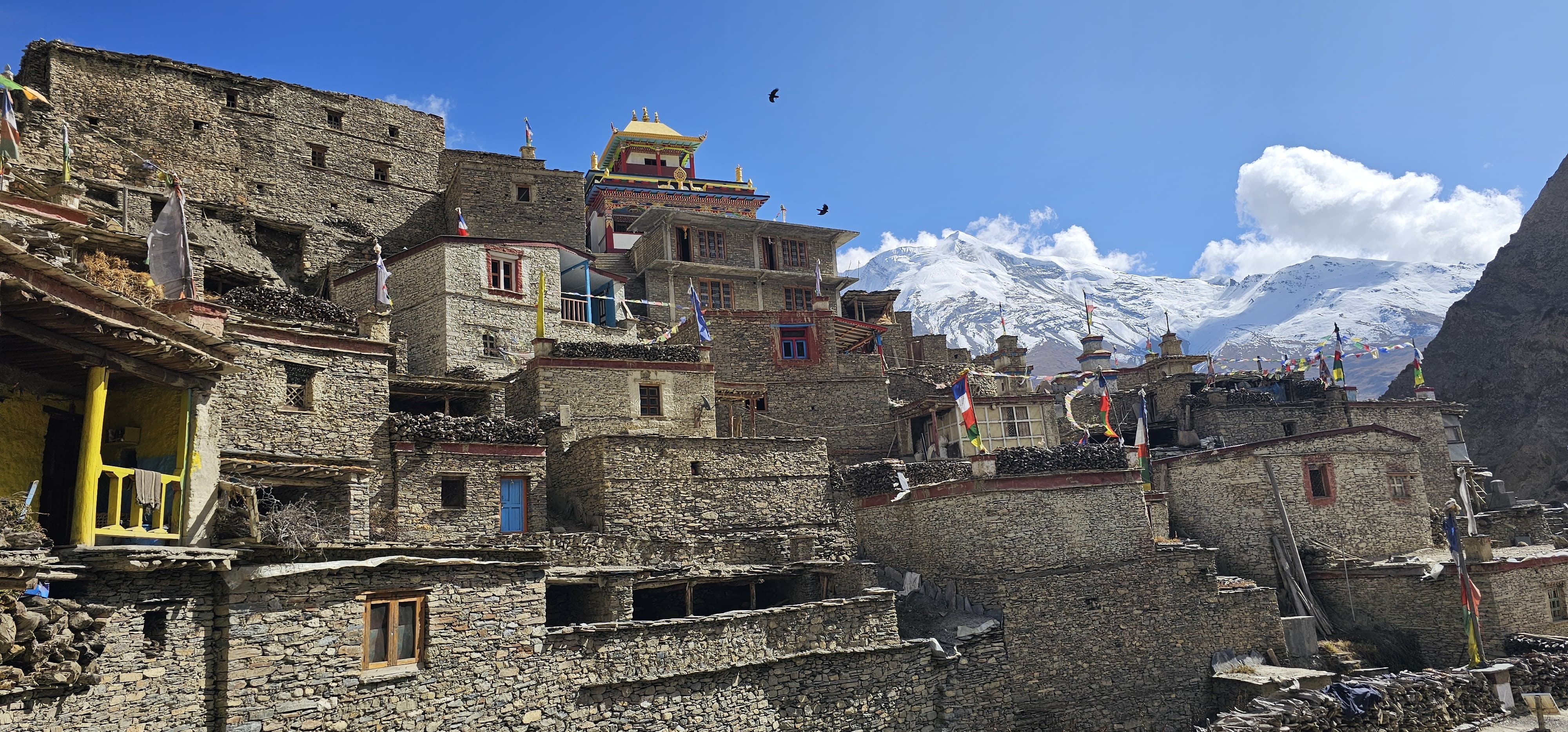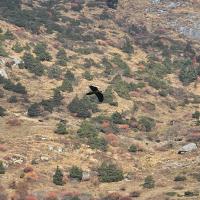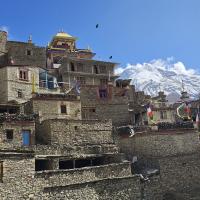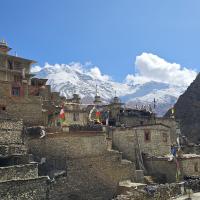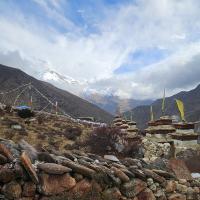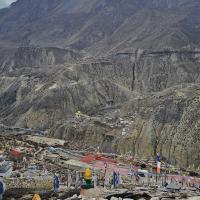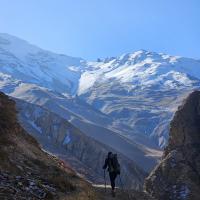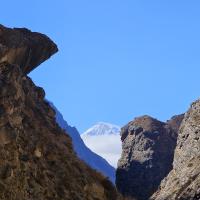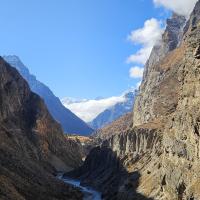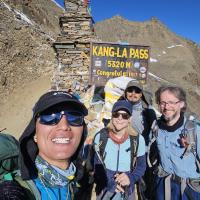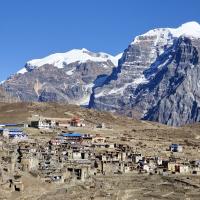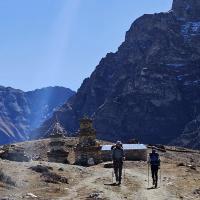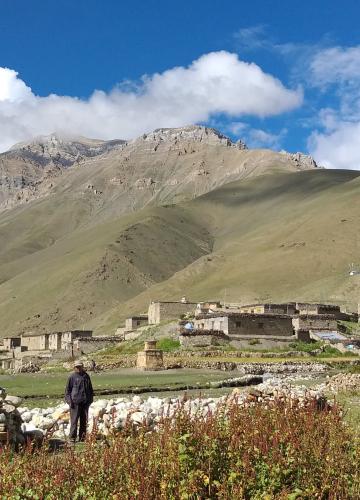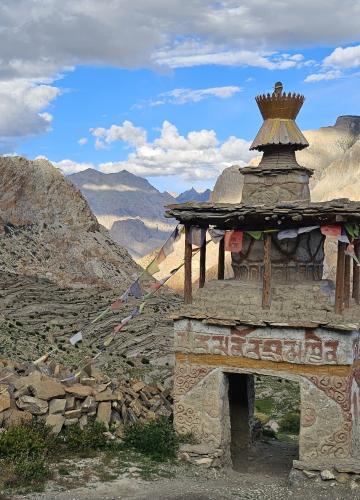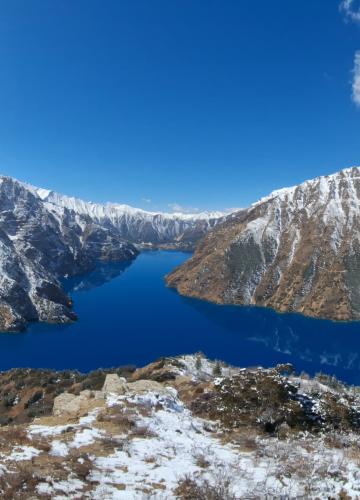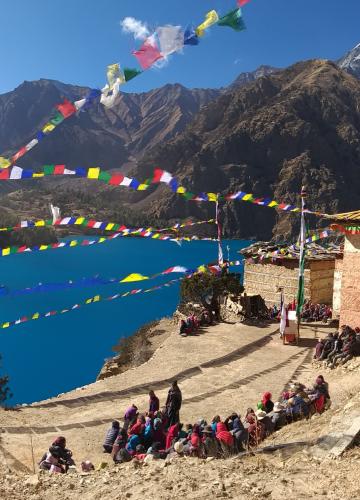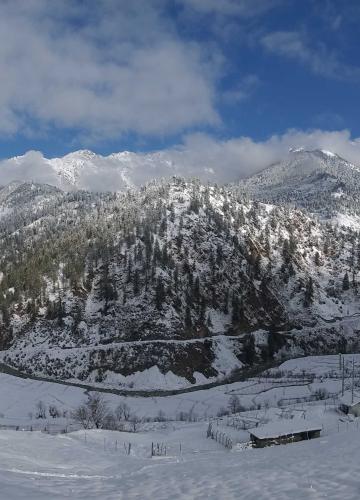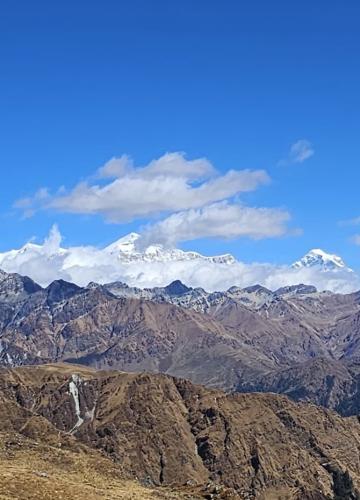Narphu Valley Trek is an adventure into the most untouched and remote parts of the Himalayas in Nepal. This trek, lying hidden away in the northeast corner of the Annapurna region, offers the perfect opportunity for an ascent into an untouched landscape where natural beauty merges with ancient Tibetan culture.
Nar-Phu Valley is different from most of the busier trekking routes in Nepal and really can be referred to as a real trek back in time. It meanders through narrow gorges, dense forests, alpine meadows, and finally rugged mountain terrain to reveal the villages of Nar and Phu, still very secluded. Ancient villages situated on high-altitude plateaus with towering snow-capped peaks all around them are dotted with centuries-old monasteries, chortens, and prayer flags.
This trek is not only a bundle of breathtaking scenery, but also about being embedded in the unique lifestyle that prevails among the Himalayan people. The culture here still carries a great imprint of Tibetan Buddhism, while people still practice age-old traditions of yak herding, weaving, and subsistence farming. These remote villages offer insights into the daily lives of their inhabitants, spiritual practices, and their ever-warm hospitality as one treks through these areas.
A major highlight of the trek is crossing the Kang La Pass at 5,306 meters, which, though strenuous, promises great views of the Annapurna and Manaslu ranges. The journey also takes one through lower regions of the Annapurna Conservation Area, adding variety to the landscapes one will go through-from lush greenery to arid, high-altitude deserts.
Nar Phu Valley Trek is ideal for experienced trekkers who seek solitude and rich cultural depth. It is a rather physically demanding trek, but the rewards are unparalleled-untouched natural beauty, a deep sense of peace, and an unforgettable cultural experience. This truly embodies the spirit of adventure and exploration, making for one lifetime memory.
Whether you are avoiding crowds, seeking high-altitude trekking, or even exploring a world with abundant tradition and tranquility, the Nar Phu Valley Trek offers it all in a setting that feels almost like entering another world.
Why Choose the Nar Phu Trek?
The Nar Phu Trek is a hidden treasure in the Himalayas, offering a perfect blend of adventure, pristine landscapes, and cultural depth. This off-the-beaten-path journey takes you into the remote Nar and Phu villages, where Tibetan traditions have remained untouched for centuries. The trek winds through dramatic gorges, lush forests, and rugged alpine terrain, culminating at the breathtaking Kang La Pass (5,306 m) with panoramic views of the Annapurna and Manaslu ranges. Unlike the crowded trails of Nepal, the Nar Phu Trek provides peace and solitude, enriched by interactions with warm-hearted locals and visits to ancient monasteries. Along the way, you’ll witness diverse flora and fauna within the Annapurna Conservation Area, making it a haven for nature lovers and adventurers alike. For those seeking a challenging yet deeply rewarding trek filled with cultural immersion and natural beauty, the Nar Phu Valley is an unparalleled choice.
Best Time to Trek in Nar Phu Valley
The best time to trek in Nar Phu Valley is during the spring (March-May) and autumn (September-November) seasons. These months offer stable weather, clear skies, and moderate temperatures, making the journey both safe and enjoyable.
Spring: Witness vibrant rhododendron blooms and lush landscapes.
Autumn: Enjoy crystal-clear mountain views and pleasant trekking conditions.
However, the trek can be done in the winter season; occasionally the snow impedes crossing high passes. As for the rest season there are only heavy monsoon rains between June and August that also make trails slippery most of the time.
Cost of Nar Phu Trek
The cost of Nar Phu Trek varies depending on the duration, group size, and services included in your package. Here's a breakdown of typical expenses:
1. Permits:
Nar Phu Valley Restricted Area Permit: USD 90 (per week, September-November) or USD 75 (per week, December-August).
Annapurna Conservation Area Permit (ACAP): Around USD 30.
2. Guide and Porter: A professional guide typically costs USD 25–30 per day, and a porter costs around USD 20 per day.
3. Accommodation and Food: Lodges or tea houses charge USD 10–15 per night, with meals costing USD 20–30 per day.
4. Transportation: Costs for buses or private jeeps to and from the trailhead range from USD 20–50 per person.
On average, a 10–17 day Nar Phu Trek can cost between USD 2000 - 3000 per person, including permits, transportation, guide services, accommodation, and food.
Tips for a Successful Nar Phu Trek
Prepare Physically: Build endurance with cardio exercises and strengthen your core and legs. Practice hiking with a loaded daypack.
Acclimatize Properly: Take rest days, hydrate well, and watch for altitude sickness symptoms like headaches or nausea.
Get the Right Permits: Secure a Nar Phu Valley Restricted Area Permit and an Annapurna Conservation Area Permit (ACAP) before trekking.
Pack Smart: Bring layered clothing, sturdy boots, trekking poles, and a first-aid kit. Include energy snacks and a reliable sleeping bag.
Hire a Guide and Porter: A guide ensures safety and navigation, while a porter helps lighten your load.
Choose the Right Season: Trek in spring (March-May) or autumn (September-November) for stable weather and clear views.
Respect Culture and Nature: Follow "Leave No Trace" principles, respect local customs, and avoid single-use plastics.
For more information on this incredible trek into the heart of the Himalayas, or to reserve your space and for Customize Trip, get in touch with us right now.
